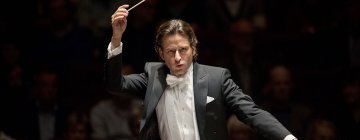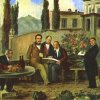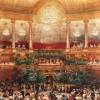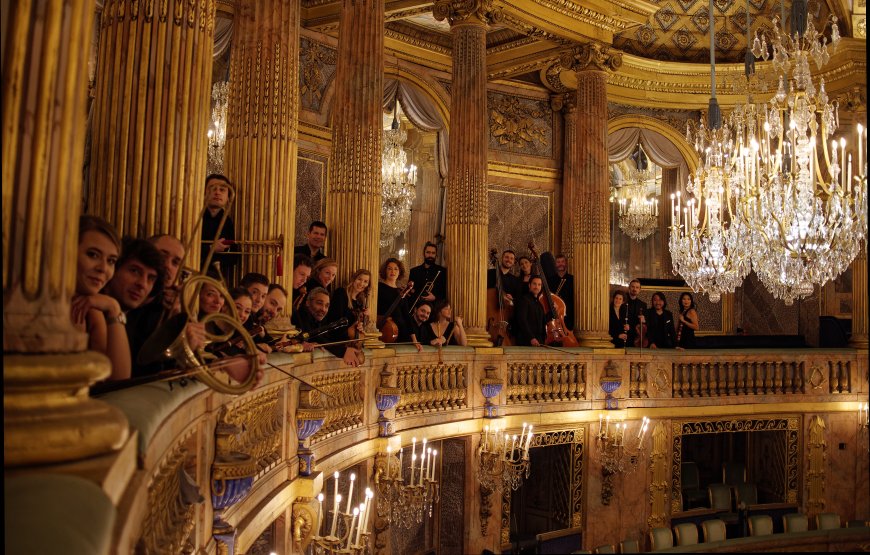
The Versailles Royal Opera makes its home in one of history’s most famous settings: the Palace of Versailles. Just 12 miles outside Paris, the grand estate houses a strikingly beautiful concert hall completed for King Louis XV in 1770, once the largest performance venue in Europe.
So it’s only fitting that the esteemed opera company, embarking on its first U.S. tour this summer, would want to play somewhere with comparable beauty for its North American debut.
The Versailles Royal Opera is slated to bring its acclaimed production of Gaetano Donizetti’s La fille du régiment to Charles Krug Winery in St. Helena on July 18. The evening is expected to be one of the highlights of this year’s Festival Napa Valley, which kicked off on July 5 and continues through July 20, with classical concerts, film screenings, and more at various Wine Country locales.
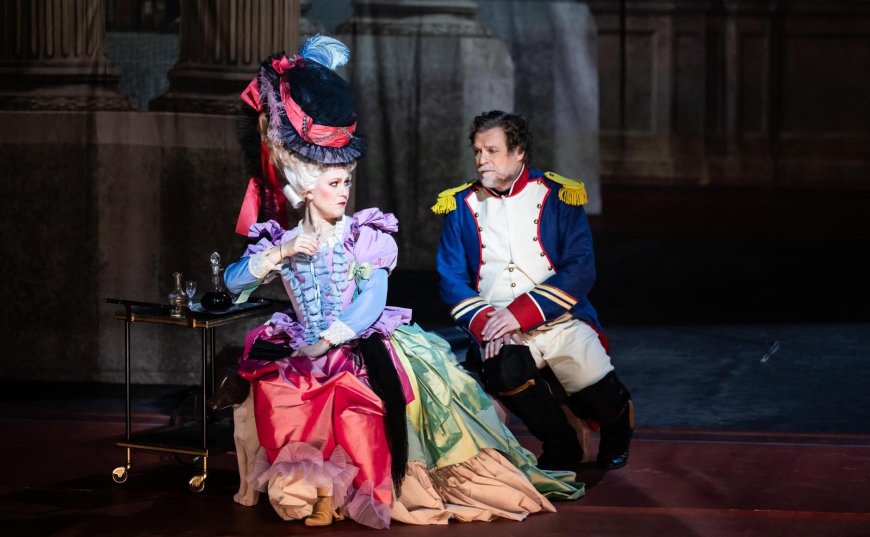
But it’s not just opulence that connects Versailles and Napa. Stage director Jean-Romain Vesperini, who mounted Fille in France this spring, was referred to the historic company for this production by Festival Napa Valley’s co-founder, vice president, and director of artistic planning, Charles Letourneau.
That introduction sparked a years-long international collaboration that ultimately made it possible to adapt the production for a California vineyard.
“You couldn’t produce an opera like this in the U.S.,” Letourneau told SF Classical Voice via Zoom call from his New York office, explaining how the effort to bring Fille had to start overseas. “So many elements are so particular to France and Versailles.”
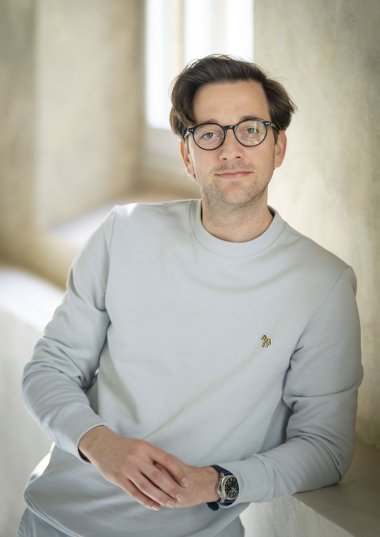
Vesperini, who lives in Paris but has worked with Festival Napa Valley for the past six years, was primed to serve as ambassador. On a separate Zoom call from Liège, Belgium, where he was in rehearsal for another opera, the director described how this production of Fille is rooted in historical accuracy and a very specific time and place.
First and foremost visually are the period costumes by renowned fashion designer Christian Lacroix, which evoke the early 19th-century Napoleonic era, when Donizetti’s comic two-act opera is set. There’s also the orchestra playing on period instruments, tuned lower than standard modern pitch — as they would have been heard at the opera’s 1840 premiere.
But fidelity to the past doesn’t mean this production can’t also come alive for 21st-century audiences.
“I often say, it is not necessary to have contemporary costumes or set design to make a contemporary staging,” explained Vesperini.
To this end, much of his directing has focused on letting the singers behave and react more like people in 2025, which adds humor and helps modern audiences identify with the characters.
Letourneau praised the updates that Vesperini and the rest of the artistic team have carried out in this spirit.
“They were clever and rewrote some of the dialogue to make references to what’s happening today in America, like TikTok,” he noted. “They’re young, they’re hip, they’re fun, and they’re motivated.”
You might even say there’s a tradition of ingenuity at Versailles. Designers equipped the opera house in 1770 with stage techniques so advanced they remained in wide use across Europe and much of the Western world for the next 200 years. Those practices — large painted backdrops, sliding scenery flats, and action that shifted between the forestage and full stage — were established before the French Revolution, when the venue was shuttered. (It underwent restoration in the 1950s and reopened in its present form in 2009 following a safety retrofitting.)
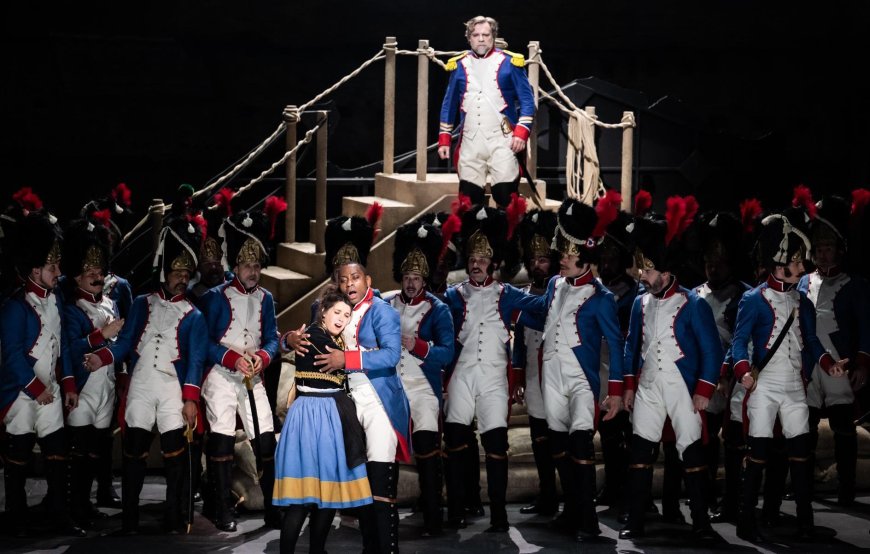
Many modern productions there, including Fille, embrace this history by continuing to feature painted backdrops. But adapting everything for a differently sized outdoor stage in Napa required further innovation.
Vesperini revealed that the company took photos of the sets in Versailles, digitized them, and then built a model on a computer. What the festival audience will see are digital projections of these original sets — just one solution to the challenge of transporting a full-scale production across an ocean and a continent.
Letourneau acknowledged that when he and his colleagues first discussed hosting a Versailles opera in Napa about seven years ago, it was “one of those crazy ideas that seemed ridiculous and out of reach.” But he persisted, in part because of the parallels he saw between the two cultural retreats. Versailles, he explained, is “very much of a similar mindset to what we do in Napa — which is creating these extraordinary artistic experiences and finding ways to pay for them.”
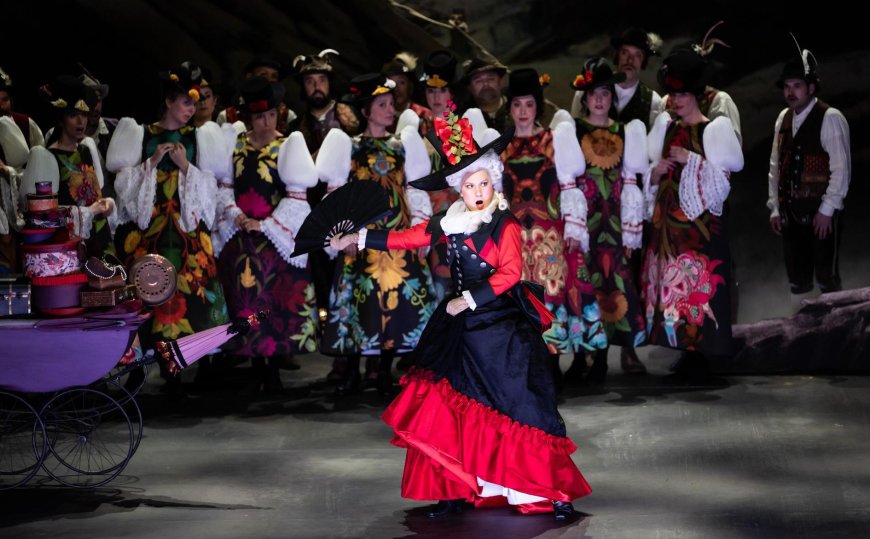
A lunch in New York City with Gerret and Tatiana Copeland, owners of Bouchaine Vineyards in Napa and supporters of the festival since its beginning nearly two decades ago, led to solid backing.
In addition to Fille, presented on the annual opera series underwritten by San Francisco philanthropist Maria Manetti Shrem, the Versailles Royal Opera Orchestra is scheduled to play a second program of Baroque favorites on July 19 at Copeland Olive Hill Estate in Carneros.
It’s a cultural exchange that everyone can get excited about. Festival Napa Valley’s pay-what-you-can pricing means that tickets for Fille can be purchased for as little as $5; general admission and lawn seats are otherwise fixed at $35.
For an experience that would normally require a trip to Versailles, that’s a bargain.
“This is a happy story about countries and cultures collaborating together,” Letourneau said. “We need more of that.”
This story was first published in Datebook in partnership with the San Francisco Chronicle.
